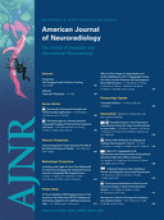Abstract
BACKGROUND AND PURPOSE: VBM is increasingly used in the study of neurodegeneration, and recently there has been interest in its potential as a biomarker. However, although it is largely “automated,” VBM is rarely implemented consistently across studies, and changing user-specified options can alter the results in a way similar to the very biologic differences under investigation.
MATERIALS AND METHODS: This work uses data from patients with HD to demonstrate the effects of several user-specified VBM parameters and analyses: type and level of statistical correction, modulation, smoothing kernel size, adjustment for brain size, subgroup analysis, and software version.
RESULTS: The results demonstrate that changing these options can alter results in a way similar to the biologic differences under investigation.
CONCLUSIONS: If VBM is to be useful clinically or considered for use as a biomarker, there is a need for greater recognition of these issues and more uniformity in its application for the method to be both reproducible and valid.
Abbreviations
- CAG
- cytosine adenine guanine
- DARTEL
- Diffeomorphic Anatomical Registration Through Exponentiated Lie algebra
- EHDN
- European Huntington' Disease Network
- FDR
- false discovery rate
- FWE
- family-wise error
- FWHM
- full width at half-maximum
- GM
- gray matter
- HD
- Huntington disease
- Mod.
- modulation
- NA
- not applicable
- SPM
- statistical parametric mapping/statistical parametric map
- TFC
- total functional capacity
- TIV
- total intracranial volume
- UHDRS
- Unified Huntington Disease Rating Scale
- Uncor.
- uncorrected
- VBM
- voxel-based morphometry
- Copyright © American Society of Neuroradiology
Indicates open access to non-subscribers at www.ajnr.org












